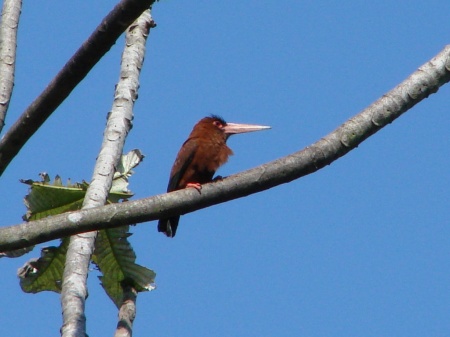Nomdeploom (talk | contribs) |
m |
||
| Line 2: | Line 2: | ||
[[Image:Chestnut_Jacamar.jpg|thumb|450px|right|Photo by faswimmer<br />Location: [[Peru]] ]] | [[Image:Chestnut_Jacamar.jpg|thumb|450px|right|Photo by faswimmer<br />Location: [[Peru]] ]] | ||
| − | [[Image:Purus_Jacamar_MWC.jpg|thumb|right|450px|Photo credit: Peter R. Bono <br />Date: 2008-08-11 <br />Location: Cocha Camungo, [[Manu Wildlife Center]] (approx. 320m), [[Peru]]]] | + | [[Image:Purus_Jacamar_MWC.jpg|thumb|right|450px|Photo credit: {{user|pbono|Peter R. Bono}} <br />Date: 2008-08-11 <br />Location: Cocha Camungo, [[Manu Wildlife Center]] (approx. 320m), [[Peru]]]] |
==Identification== | ==Identification== | ||
Revision as of 13:41, 2 September 2009
- Galbalcyrhynchus purusianus

Photo credit: Peter R. Bono
Date: 2008-08-11
Location: Cocha Camungo, Manu Wildlife Center (approx. 320m), Peru
Date: 2008-08-11
Location: Cocha Camungo, Manu Wildlife Center (approx. 320m), Peru
Identification
Replaces White-eared Jacamar in central and southeastern Amazonia; the two species are not known to meet, but their distributions approach one another along the central Rio Ucayali.
Distribution
Similar Species
Similar in appearance to White-eared Jacamar but lacks the white cheek patch.
Taxonomy
Habitat
Rare to uncommon in open swampy forest, edges to rivers and oxbow lakes, and young river islands.




